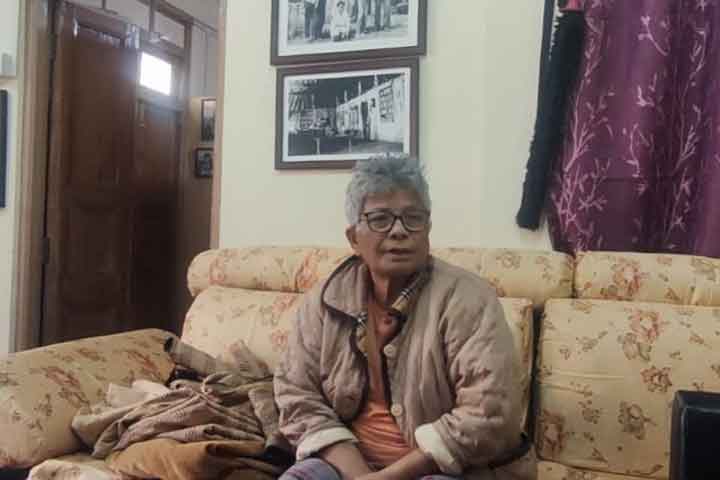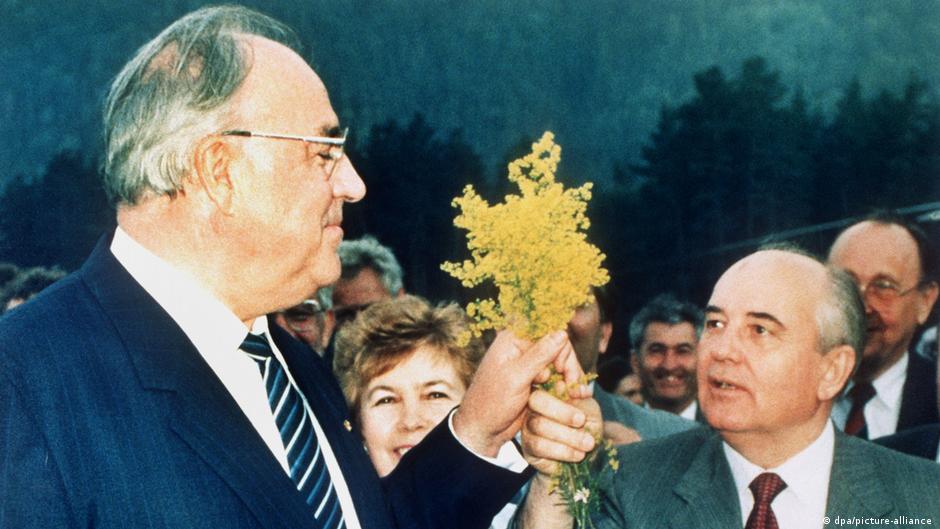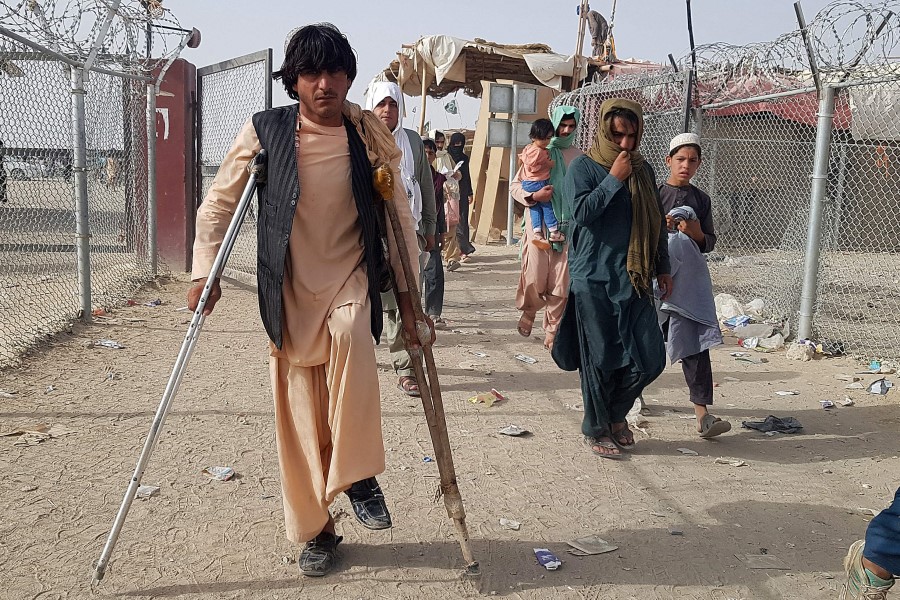Mikhail Gorbachev's pop culture legacy
Beyond his political career, Mikhail Gorbachev became an unlikely cultural icon, appearing in ads for Pizza Hut and Louis Vuitton. He was immortalized in film by Werner Herzog, and even won a Grammy Award.
Hours after the news of Mikhail Gorbachev’s death was made public, Pizza Hut started trending on Twitter. Amid the tributes to the last leader of the Soviet Union who initiated the fall of the Iron Curtain and the Berlin Wall through his perestroika and glasnost policies, a 25-year-old ad for the pizza chain went viral. The clip opens with a series of shots of Moscow landmarks, such as the Cathedral of Christ the Savior and St. Basil’s Cathedral, and then shows Mikhail Gorbachev and a young girl, presumably his granddaughter, walking through a snowy Red Square before they enter a Pizza Hut restaurant. The other clients in the restaurant recognize their former leader and all start discussing his legacy. While a middle-aged man complains that because of Gorbachev, they face economic confusion and political instability, and are even plunged into complete chaos, a younger guy points out that he is the reason that they’ve gained access to opportunity and freedom. An older lady at the table ends the dispute with one killer argument: Because of him, we have many things like Pizza Hut, she points out, and everyone agrees, leading them to cheer, Hail to Gorbachev!
Commercials to finance his foundations
Along with charging fees for the lectures he gave around the world, appearing in ads was one of the ways Gorbachev used to finance his foundations. The think-tank International Foundation for Socio-Economic and Political Studies, also known as the Gorbachev Foundation, was created in 1991 to monitor developments in post-Soviet Russia and promote democratic values. In 1993, Gorbachev also used the money from his Nobel Peace Prize to help establish the Novaya Gazeta newspaper, known for its critical and investigative coverage of Russian politics. Gorbachev’s Geneva-based non-profit environmental organization, Green Cross International, was also set up that same year. Among the products Gorbachev agreed to promote were Apple Computers. In the 1994 ad created for German publications, Gorbachev is shown standing next to a Macintosh computer. A man can either be part of the solution or part of the problem, the caption says, quoting the politician, I have chosen the former. The computer screen happens to be flashing the name and symbol of Green Cross International.
A Louis Vuitton ad that reflected a Russian murder case
But it was the details of another commercial that triggered questions. In 2007, Gorbachev appeared in an advertisement for French luxury label Louis Vuitton. In a portrait by star photographer Annie Leibovitz, the former Soviet leader is shown in the back of a car, driving past the remains of the Berlin Wall a reference to political legacy. He has a classic brown Louis Vuitton bag sitting next to him. There’s a magazine poking out of that bag. Those who were curious enough to zoom into the picture to analyze its contents still were required to understand the Russian language to read the front cover headline: Litvinenko’s murder: They wanted to give up the suspect for $7,000. That was the cover of the May 28, 2007 edition of the New Times magazine, a liberal Russian weekly that has often published pieces critical of President Vladimir Putin. The magazine’s cover refers to the case of Alexander Litvinenko, a former Russian spy and prominent critic of Putin who was poisoned. On his deathbed, Litvinenko accused the Russian president of having orchestrated his murder. The suspect above-mentioned in the headline refers to Andrei Lugovoi, who is wanted by British authorities; the Kremlin has, however, refused to extradite him from Russia. Responding to internet speculation at the time, Louis Vuitton spokespeople said that the magazine shown in the image was not chosen with any deliberate intention beyond adding authenticity to the look of the picture. Nina Hagen’s rap for Mikhail Singer Nina Hagen, aka the German Godmother of Punk, paid an early tribute to Gorbachev in a humorous rap song titled Michail, Michail (Gorbachev rap), released on her eponymous album from 1989. The song’s lyrics were actually written by her stepfather, poet and singer-songwriter Wolf Biermann, who is one of former East Germany’s most famous dissidents. Biermann also released his own version of the song that same year, on his album Gut Kirschenessen. DDR ça ira! An astute observer of the changes emerging from Gorbachev’s glasnost and perestroika reforms, Biermann advised his dear Gorbi through the lyrics of the song to stay smart to avoid cannons instead of butter, all while reminding him that, alongside freedom, the population will need food, too (Nix is mit Freiheit ohne Futter). From a Grammy Award to a Werner Herzog documentary Gorbachev also contributed to a number of noteworthy media productions. His recording of Sergei Prokofiev’s Peter and the Wolf (1936), created with Bill Clinton and Sophia Loren, won the 2004 Grammy Award for best spoken-word album for children. Different documentaries also feature interviews with the pivotal political figure. Most prominently, Werner Herzog directed Meeting Gorbachev, which features three conversations filmed over the course of six months. In the 2018 film, Gorbachev discusses different aspects of his personal life, his legacy, as well as his disappointments. At the time of the shoot, Gorbachev was already in poor health, but he was still clear-headed about what was happening in his country. The democratic reforms he had tried to set up were being swept aside, with Russian President Vladimir Putin using authoritarian measures to reinstate the Soviet empire that collapsed under Gorbachev’s watch. One quote from the Meeting Gorbachev film summarizes the melancholy mood triggered by the overturn of Gorbachev’s attempted democratic reforms. Herzog asks the veteran politician: I would like to hear, what should be on your gravestone? With a sparkle in his eye, Gorbachev simply answers: We tried.
31 Aug 2022,22:35



















 Live Tv
Live Tv





